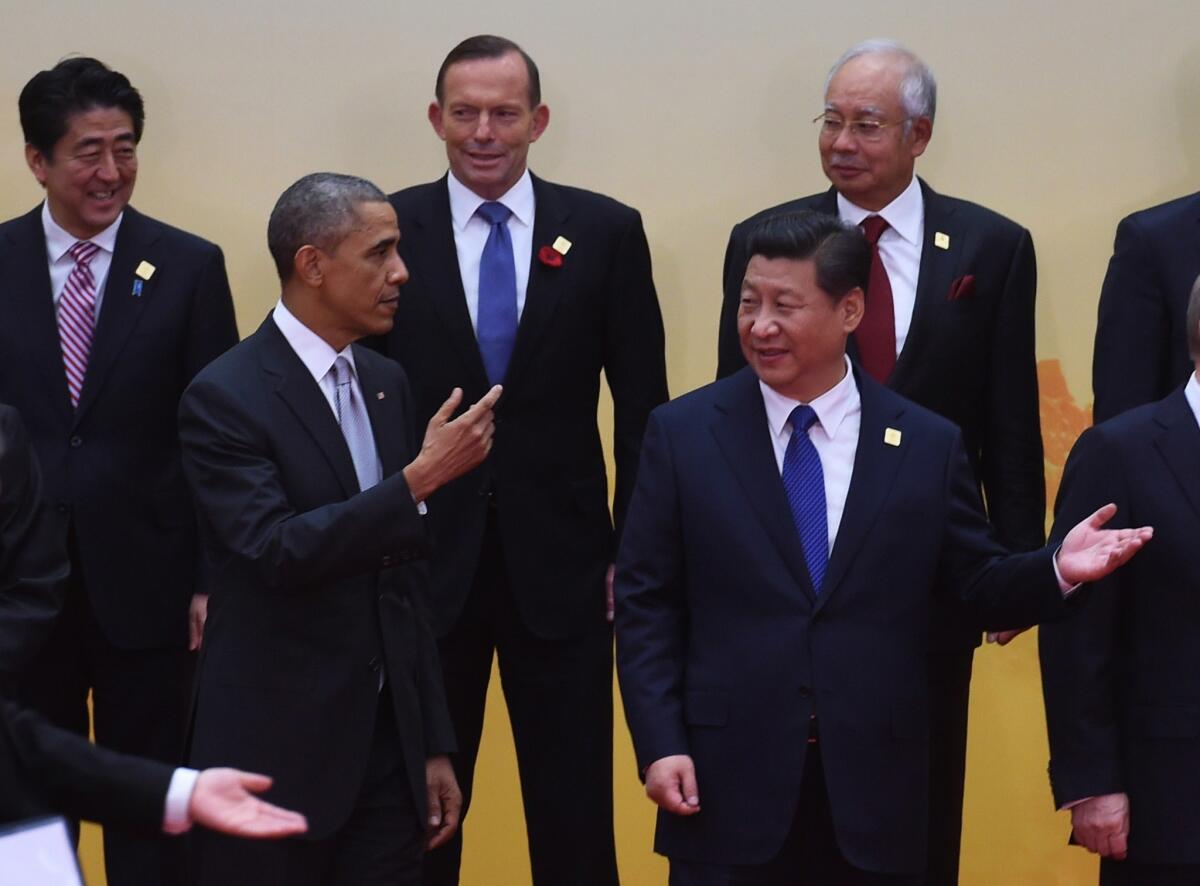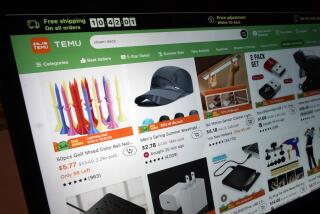U.S., China reach agreement on cutting tariffs on tech products

Calculators, semiconductors, medical equipment and cash registers: These products and other electronics are part of a wide-reaching U.S.-China deal to eliminate tariffs on tech products that backers say could generate up to $1 trillion in additional trade yearly.
The two countries agreed late Monday to expand the scope of the Information Technology Agreement, a global trade pact. The ITA covers 70 countries and according to the World Trade Organization already covers 97% of all trade in information technology products worldwide.
China is the world’s largest importer and exporter of these products, but disagreements between the U.S. and China had stalled efforts to expand the ITA’s scope and prevented fuller discussions among all signatories.
President Obama unveiled the deal Tuesday morning during the Asia-Pacific Economic Cooperation summit in Beijing after talks had stagnated for over a year. Since coming into force in 1997, the ITA has expanded to cover more than $4 trillion in annual trade, according to the U.S. government.
The new deal is expected to increase global GDP by an estimated $190 billion annually and lower costs for manufacturing industries that rely on information and technology parts, the White House said.
Full discussions on ratification are expected to take place among WTO members in Geneva in December.
If the deal is concluded, more than 200 tariff categories will be reduced to zero, cutting duties on high-tech devices from video game consoles to GPS devices.
Tariffs on loudspeakers (currently as high as 30%), semiconductors (now as high as 25%), and printer ink cartridges (also now as high as 25%), would also be eliminated, according to the U.S. government.
How exactly a deal would be implemented – whether China will allow all tariffs to be reduced at once or piecemeal – will be decided in Geneva, U.S. Trade Representative Michael Froman said Tuesday in Beijing.
U.S. authorities said the agreement could “support” up to 60,000 new American jobs and eliminate tariffs on nearly $100-billion worth of made-in-America products.
The agreement also represents a constructive step in relations between the two governments, who have seen a rocky relationship over the past year.
Ties between Beijing and Washington have been stressed by issues ranging from cybersecurity to perceived regulatory unfairness in China which has led many American companies to adopt a more “moderated optimism” about doing business in China, according to John Frisbie, president of the U.S.-China Business Council.
“Making a positive breakthrough on the ITA this week sets the tone for more ambitious agreements that are in discussion,” said Frisbie.
The agreement could lead the way for a Bilateral Investment Treaty between the U.S. and China, which both parties have made a priority.
Silbert is a special correspondent.
More to Read
Start your day right
Sign up for Essential California for news, features and recommendations from the L.A. Times and beyond in your inbox six days a week.
You may occasionally receive promotional content from the Los Angeles Times.






